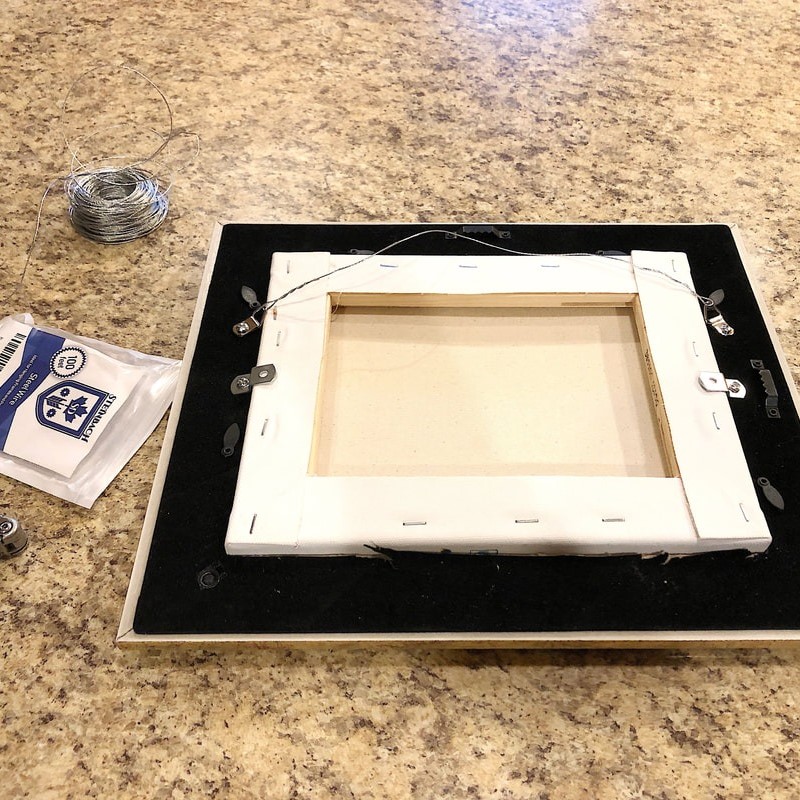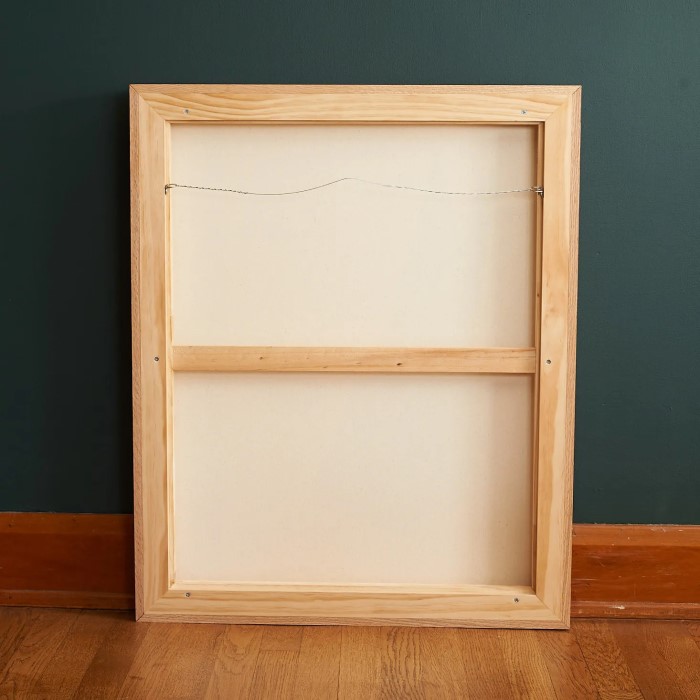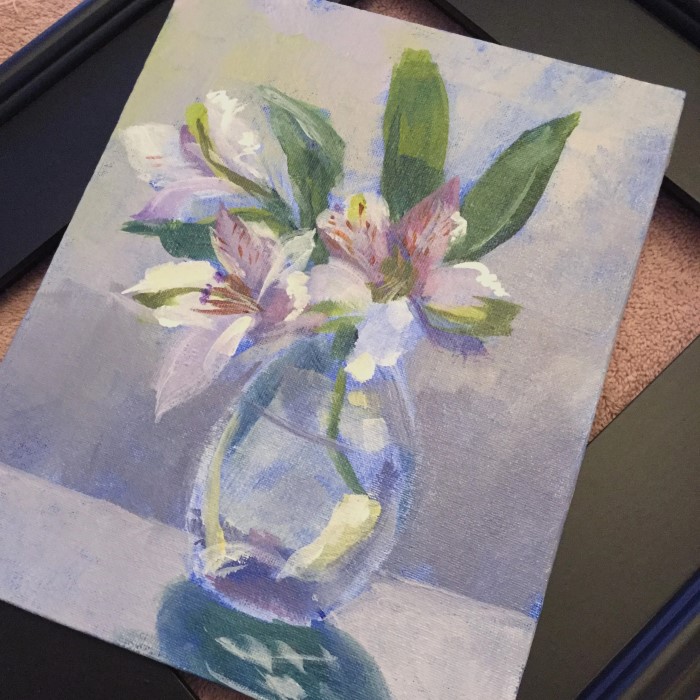Introduction
Framing can significantly enhance the beauty of a canvas painting. A well-chosen frame not only complements the artwork but also adds a finishing touch that can transform its presentation in any space. Whether it’s a piece of art you created or a masterpiece acquired from an artist, knowing how to frame it correctly is essential. Framing a canvas painting is not merely about creating a border; it involves selecting the right style, materials, and techniques that safeguard the artwork while enhancing its aesthetic appeal.
In this comprehensive guide, we will explore the best practices for framing canvas paintings. We’ll discuss the various types of frames, the materials suited for framing, and techniques to ensure your artwork is showcased beautifully. Additionally, we’ll share practical tips to help you choose the right framing options that align with your decor style.

Understanding the Importance of Framing
Before deciding on how to frame your canvas painting, it’s imperative to understand why framing is important. Proper framing enhances the viewing experience and ensures the longevity of your artwork.
Preservation of Artwork
- Protection Against Damage: A frame provides physical protection for the canvas. It guards against dust, dirt, and potential tears.
- UV Protection: Some frames come with UV-filtering glass or acrylic that protects your canvas from the sun’s harmful rays. This helps in preserving the original colors of the painting and prevents fading over time.
Enhancement of Aesthetic Appeal
- Creating a Visual Focus: Framing can draw attention to the artwork, effectively making it the focal point of the room. A well-chosen frame complements the canvas and enhances its colors, theme, and style.
- Matching Your Decor: Selecting the right frame can help tie together the elements of your room. Different frame styles—ranging from classic to contemporary—allow for creativity in enhancing your home decor.
Types of Frames for Canvas Paintings
When it comes to selecting a frame, understanding the different types is crucial. Each frame type offers unique aesthetics and benefits. Below are some common frame styles appropriate for canvas paintings:
Traditional Frames
- Wooden Frames: Wooden frames are timeless and versatile. They can be made from various woods, each adding a distinct character. Dark woods offer a classic look, while lighter woods bring warmth, great for natural-themed spaces.
- Gilded Frames: These frames feature gold or silver leaf accents for a luxurious touch. They are ideal for formal settings, highlighting elegant artwork beautifully.
Contemporary Frames
- Metal Frames: Metal frames have become increasingly popular for modern artwork. They are sleek, sturdy, and complement contemporary or minimalist decor styles.
- Floating Frames: A floating frame creates the illusion that the canvas is suspended between two panes. This style adds depth and dimension, allowing the edges of the canvas to be visible.
Specialty Frames
- Shadow Box Frames: These deep frames offer space for items like three-dimensional art or artifacts. Ideal for mixed media pieces, shadow box frames provide a unique display opportunity.
- Custom Frames: For unique pieces, custom framing may be the ideal choice. This allows you to choose specific materials, colors, and designs that perfectly match the artwork.
Choosing the Right Materials for Framing
Once you select a frame type, determining the right materials for framing a canvas painting is next. The materials used can affect the longevity and safety of your canvas painting.
Matting Options
- Mat Board: A mat board serves as a spacer between the artwork and the frame, preventing contact.
- Color Choices: Matting colors should complement, not overpower, the artwork. Neutral tones, such as white or cream, or colors found within the painting can enhance the overall look.
Glass and Acrylic
- Glazing Options: Regular glass can protect the painting but may not offer UV protection. Non-glare glass reduces reflections but might cause colors to appear muted.
- Acrylic Alternatives: Acrylic is more lightweight than glass and less prone to shattering. It often comes with UV protection, making it a popular choice for artworks meant for public display.
Adhesives and Fasteners
Using the right adhesives and fasteners during the framing process is essential for securing the artwork safely. It’s important to choose options that are reversible and will not harm the canvas, such as acid-free tape or clips.
Best Techniques for Framing a Canvas Painting
Preparing the Canvas
- Clean the Artwork: Before framing, gently clean the canvas using a soft brush or cloth.
- Inspect for Damage: Check the canvas for any tears, holes, or wear. If necessary, repair the artwork before framing to preserve its condition.
Framing Steps
Measure:
Accurate Measurements: Begin by taking precise measurements of the canvas. Using a measuring tape, note the width and height of the canvas to ensure that you select or construct a frame that fits perfectly.
Avoiding Assembly Issues: Accurate measurements are crucial, as they help prevent discrepancies that could lead to difficulties during the assembly process. Taking these measurements beforehand minimizes the risk of having to adjust or resize the frame after it has been cut or purchased.
Double-Check Measurements: It can be beneficial to double-check your measurements and ensure that they are consistent. A slight error could result in a poorly fitting frame, which may detract from the overall presentation of the artwork.
Attach to Frame:
Securing the Canvas: Use appropriate fasteners or clips (such as frame clips, brads, or staples) to secure the canvas firmly to the frame. This step is essential to ensure that the artwork stays in place and maintains its integrity over time.
Careful Handling: Exercise caution during this process to avoid puncturing or damaging the canvas itself. Keep the fasteners along the edges where they won’t interfere with the artwork.
Gallery Wrap Method: If employing a gallery wrap method—where the canvas is stretched over the frame without visible staples—ensure that the artwork is tensioned correctly to prevent sagging or wrinkling. Check that the canvas is taut and evenly distributed around the frame.
Add Glazing:
Incorporating Glass or Acrylic: If your frame design includes glass or acrylic glazing, carefully place it into the frame. This step protects the artwork from environmental factors while enhancing its presentation.
Ensuring Cleanliness: Before securing the glazing, inspect it for any smudges, dust, or fingerprints.
Securing the Glazing: Ensure that the glazing is properly secured in the frame, using clips or glazier points to hold it firmly in place without shifting.
Seal and Finish:
Adding a Backing Board: To protect the painting from dust and light exposure, add a backing board behind the artwork.
Securing the Backing: Attach the backing board using framing points, staples, or small nails.
Final Touches: After securing the backing, consider adding hanging hardware to the back of the frame. This preparation will make it easy to display the artwork while ensuring its protection during transit or handling.
Creative Presentation Ideas for Framed Canvas Paintings
Once your canvas painting is framed, consider how to present it for the best effect. The right placement can enhance the artwork’s impact on viewing.
Wall Displays
- Gallery Wall: Create a gallery-style wall by grouping multiple canvas paintings, including your newly framed piece. Ensure the frames are cohesive in style to maintain a uniform look.
- Highlighting Features: Use lighting to draw attention to your artwork. Spotlights or wall-mounted lights can make the colors pop and enhance the viewing experience.
Standalone and Vertical Displays
- Easel Display: For a unique approach, use an easel to present a large framed canvas. This option allows for mobility and can create an impressive visual impact in various settings.
- Table Arrangements: Smaller, framed pieces can be arranged on tables or shelves. Mix various sizes and orientations for visual interest.
Benefits of Professional Framing Services
While DIY framing is an excellent option, professional framing services offer benefits that should not be overlooked.
- Expert Guidance: Framing professionals can provide advice on materials, styles, and methods that best complement your artwork. Their expertise ensures you make informed decisions.
- Quality Craftsmanship: Professional framers ensure that your artwork frame correctly and with high-quality materials, enhancing longevity.
- Convenience: Using a professional saves time and effort, allowing you to focus on other aspects of decorating or preparing your space.
Conclusion: Elevate Your Artwork with Expert Framing
In conclusion, understanding the process and best practices involved in framing a canvas painting can significantly enhance the presentation of your artwork. As we’ve explored, there are various types of frames, materials, and techniques that can help you achieve the perfect look and feel for your canvas.
Whether you decide to frame your artwork in a traditional manner or get creative with modern designs, the choice you make will influence how your artwork is perceived. Remember to put thought into each element—from frame styles to presentation methods—to ensure your artwork stands out while protecting its longevity.
As you embark on your framing journey, consider all options available to you. Preparing, choosing, and presenting your art can be an enjoyable and enriching experience. Embrace the creative process, and your framed canvas paintings will surely enhance your decor!









